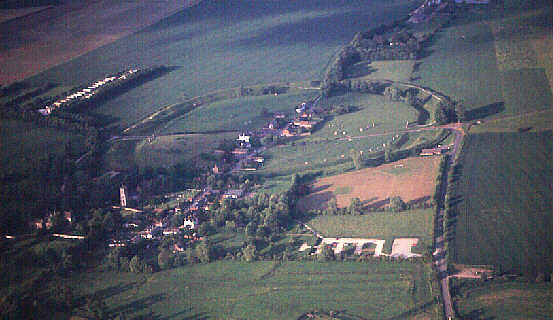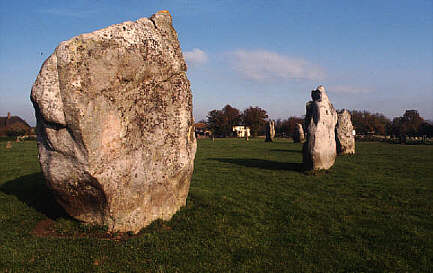
HISTORY OF AVEBURY
The showpiece of Wessex is the stone circle at Avebury, probably not as well known as Stonehenge, but nevertheless is far larger than its contemporary near Salisbury.

The Henge itself was started around 2700BC, and it covers an area of nearly 30 acres. The diameter is over a quarter of a mile, but within its confines a village has evolved since the Dark Ages, making it one of the most unique monuments in the world.
The many stones that our still standing within the Henge are called Sarsen stones, they are a type of sandstone, which is a natural stone found on the Wiltshire downs. The weight of the most mighty of the stones can be as much as ninety tonnes, these can be found inside the Henge, but overall, the amount of stones that once stood at this site was 600, if you included the Avenue stones.
Surrounding the stones is probably the deepest ditches for a stone circle. The ditch today, is no more than 20 feet deep in places, but when it was first built, it reached a depth of around 33 feet, with the bank reaching 20 feet. It has been calculated that the ditch would have taken nearly 300 people between 22-25 years to complete.
 |
 |
It is simply the premier site for megalithic Britain, nothing can touch it for its shear size, as its regarded to be one of the most sacred places in England. Indeed, many people have experienced its mystical atmosphere, which must have been one of the driving forces for the people at that time to build it. The stones themselves had to be dragged for many miles across undulating countryside, not the sort of vast distances for the completion of Stonehenge, but the entire Henge and avenues would have taken generations to build.
The Village of Avebury, which dwells within the Henge itself, was built over a period of time, and not without controversy. The Victorian politician and later named Lord Avebury, Sir John Lubbock described the village of Avebury as "The pretty little village of Avebury, like some beautiful parasite, has grown up at the expense and in the midst of the ancient temple"
The village itself started life around 500-600AD, when it became a home to a colonial settlement. The Saxons from northern Europe made their way to Wiltshire, as the area itself was a perfect place for their houses and workshops. It offered suitable land for their crops and grazing, with a good water supply to serve a large community. Very little remains of the Saxon settlement today, except some fragments around the existing church within the village. The Saxons named the ditch surrounding the stone’s weala-dic translated the Britons' Ditch. The word Avebury probably dates to the Saxons, as their leader at that time was Ava, of Affa, it was thought he was buried within the bank, and that the name was adopted and changed over time.
In the twelfth and thirteenth centuries an uneasy truce was in force over the village, it was caused by a conflict of interest between the Christian village and the pagans. The truce was finally broken in the fourteenth century and was probably stopped by the devastating plague, or perhaps the Benedictine priors, who had considerable power over the local population.
When John Aubrey discovered the village in the middle of the seventeenth century, hardly any houses were remaining within the circles. He was so impressed with the place, as he rode into Avebury in 1649, that he persuaded his King Charles II to come and visit the grandeur’s that awaits him. He guided his king around the stones, and up Silbury Hill. It wasn't until the early eighteenth century that the most damaging aspect occurred within the Henge. Techniques for breaking even the largest megalith had been developed, and were being practiced frequently. Many of the houses that are still standing today, have many of the megaliths within their walls, they were seen as nothing more than valuable building material for the local community.

In the later half of the nineteenth century campaigns started to raise their voices to prevent anymore devastation to the stones. Many of the Farmers had been digging into the earthworks damaging the stones in the process. Probably the most active campaigners was Rev Bryan King, who was vicar of St James church (Avebury's own church), and Lord Avebury himself (Sir John Lubbock). In the 1870's he bought Silbury Hill, and parts of Avebury to prevent anymore damage being inflicted on the Henge. In 1883 Silbury and West Kennet Long Barrow became the first two ancient monuments to be officially protected by law through Act of Parliament.